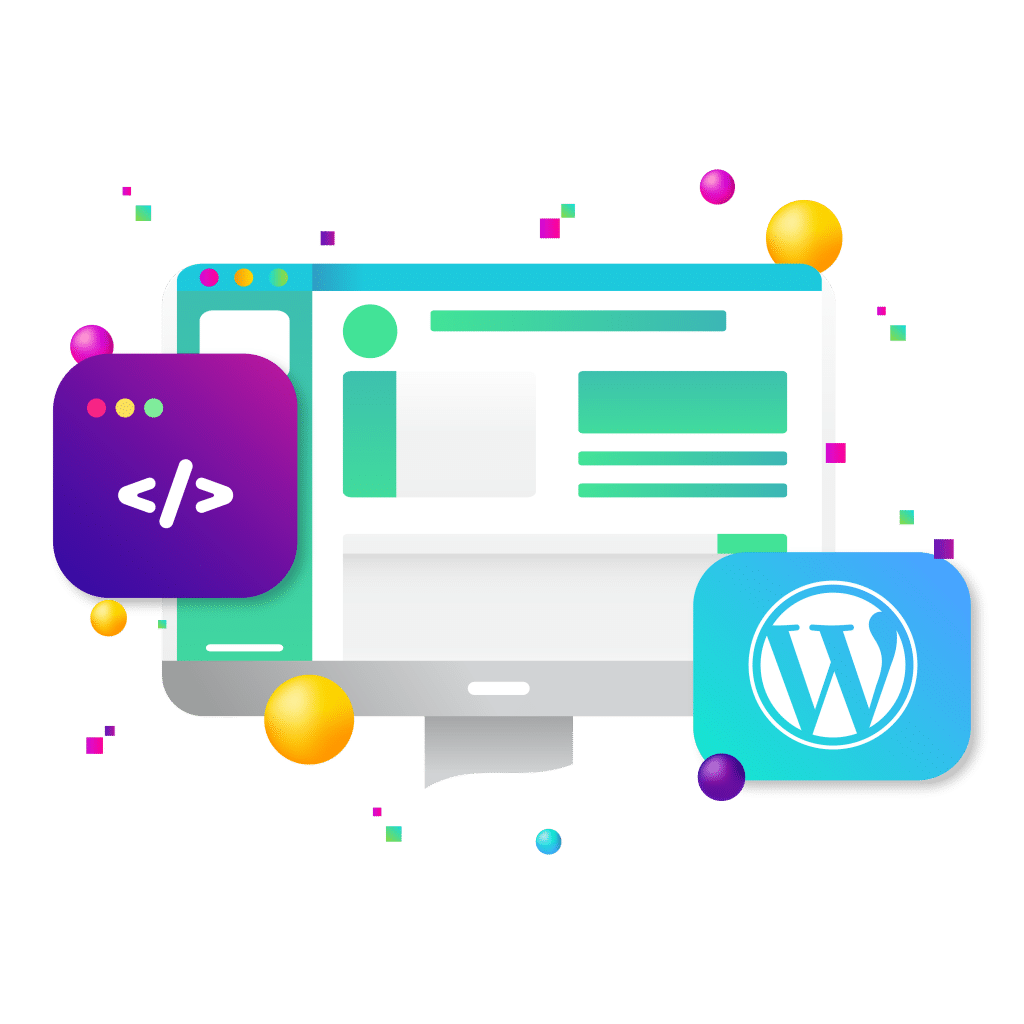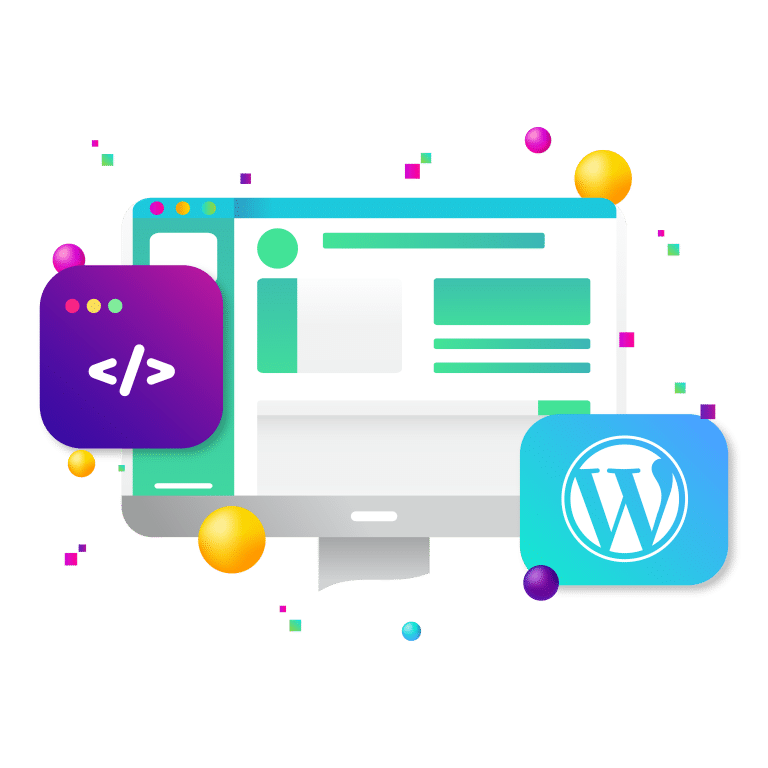
Why Core Web Vitals Matter More Than Ever
As of mid-2025, industry analyses of Google’s Chrome User Experience Report (CrUX) show that only about 43 percent of websites meet Core Web Vitals benchmarks. For WordPress site owners and digital marketers, this statistic is sobering. WordPress powers more than 40 percent of the internet, yet nearly six in ten of these sites still fall short of Google’s basic standards for performance and user experience.
The reality is that Core Web Vitals are not a technical nicety; they are a ranking factor. They shape where your website lands on search results pages and how visitors perceive your brand. A site that loads slowly, shifts its layout unexpectedly, or lags when a user tries to interact creates friction. That friction translates to frustrated users, increased bounce rates, and fewer conversions.
For organizations ranging from nonprofits to associations to e-commerce brands, Core Web Vitals represent both a challenge and an opportunity. They are a challenge because achieving good scores requires intentional performance optimization across multiple layers of your WordPress environment. Yet they are also an opportunity because improving these metrics can directly lead to higher visibility, more engaged users, and better conversion outcomes.
This article will walk through what Core Web Vitals are, why they matter, and how WordPress site owners can master them through practical performance strategies.
Understanding Core Web Vitals
Core Web Vitals are a set of metrics created by Google to measure how real users experience your website. Unlike lab tests or benchmarks run in a controlled environment, CWV data is collected from actual users through the Chrome User Experience Report. This means Google is evaluating your site based on how quickly it loads, how responsive it feels, and how stable the design appears during interaction.
The three metrics that matter most are Largest Contentful Paint (LCP), Interaction to Next Paint (INP), and Cumulative Layout Shift (CLS). LCP measures how quickly the largest visible element on a page, often a hero image or a headline, loads. To pass Google’s threshold, this must happen in under two and a half seconds. INP, which replaced the older First Input Delay metric in March 2024, measures how long it takes for the page to respond to user interactions such as clicks or taps. The benchmark is 200 milliseconds or less. CLS evaluates whether elements on the page move around unexpectedly during load. The score should stay under 0.1 to be considered good.
Together, these three signals form the backbone of user experience from Google’s perspective. For WordPress owners, every plugin you install, every theme you activate, and every hosting choice you make has a direct impact on these scores.
The SEO Connection
Google first introduced Core Web Vitals as a ranking signal in 2021, and their influence has only grown stronger. Today, CWV is not simply a tiebreaker when two sites have equally relevant content; it is a meaningful factor that determines whether your site can achieve a coveted spot on the first page of results.
The reason is simple. Google’s mission is to provide users with the best possible search experience. A slow, unstable website undermines that mission. Better CWV scores typically result in lower bounce rates, higher session durations, and more engagement, all of which reinforce positive signals back to Google’s algorithm.
For businesses competing in crowded markets, this is critical. If your competitors have similar content but their sites fail Core Web Vitals, you immediately gain an advantage by providing the faster, smoother experience.
Why WordPress Struggles with Core Web Vitals
WordPress is beloved for its flexibility, but that flexibility introduces performance challenges. Many sites rely on a stack of 20 or more plugins, each of which can add scripts, styles, or database queries that slow things down. Heavy multipurpose themes often load excessive CSS and JavaScript that aren’t needed for every page. Shared hosting environments, while affordable, often lack the power to deliver consistently fast responses. And many site owners upload oversized images and videos without proper optimization.
The combination of plugin bloat, theme complexity, inadequate hosting, and unoptimized media means that WordPress sites can easily fall behind competitors using leaner, custom-built platforms. Fortunately, WordPress also has one of the richest ecosystems of performance tools available, making it possible to overcome these hurdles with the right strategy.
Caching and Content Delivery Networks
One of the most effective ways to improve Core Web Vitals is through caching. Instead of rebuilding a page for every visitor, caching stores a pre-rendered version and delivers it instantly. This can cut seconds off your load times. WordPress offers several excellent caching solutions, from plugin-based approaches like WP Rocket and LiteSpeed Cache to server-level caching through managed hosting providers.
Beyond local caching, content delivery networks, or CDNs, play a critical role. A CDN distributes your site’s assets across servers worldwide so they load quickly from the location closest to your users. If a visitor in London requests your homepage, they receive the images and scripts from a nearby edge server rather than waiting for them to travel across the Atlantic. The result is reduced latency and faster Largest Contentful Paint scores.
When properly configured, caching and CDNs reduce the work your server must perform, accelerate load times, and improve responsiveness. They create the foundation for better Core Web Vitals performance.
Optimizing Images for Better LCP
Images are often the single heaviest element on a WordPress site, and they are frequently responsible for poor LCP scores. A large hero banner or slideshow that weighs several megabytes can easily push LCP above the two-and-a-half-second threshold.
The solution begins with compression. Tools like Imagify or ShortPixel can dramatically reduce file sizes without noticeable quality loss. Next, it is essential to serve responsive images. WordPress includes srcset functionality by default, which ensures different devices receive appropriately sized images. Modern formats like WebP and AVIF further reduce file sizes while preserving visual fidelity. Finally, lazy loading can be employed to defer off-screen images until the user scrolls down, ensuring only the most critical content loads immediately.
By compressing, resizing, converting, and lazy loading, WordPress site owners can transform bloated image assets into lightweight, CWV-friendly content.
Cleaning Up Code: CSS and JavaScript
Another common performance bottleneck is bloated or poorly managed code. Many WordPress themes and page builders ship with large bundles of CSS and JavaScript, much of which goes unused on most pages. Every extra file adds to the time it takes for a browser to render the page.
Minification is a straightforward improvement that compresses these files by removing unnecessary characters and whitespace. Tools like Autoptimize can handle this automatically. Beyond minification, deferring non-critical scripts until after the page has rendered ensures that the most important visual elements appear first. For CSS, inlining critical styles for above-the-fold content helps browsers paint meaningful content immediately, while unused styles should be stripped away with optimization plugins like Asset CleanUp or Perfmatters.
Every kilobyte of unnecessary code removed translates directly into faster rendering, smoother interaction, and stronger Core Web Vitals performance.
The Role of Hosting and Server Environment
No matter how many plugins you install or images you compress, your site’s performance will always be constrained by the quality of its hosting. Shared hosting packages often cram thousands of sites onto a single server, creating unpredictable response times and slow Time to First Byte.
To meet Core Web Vitals standards, your hosting provider must offer a fast, reliable environment. That means up-to-date PHP versions such as PHP 8.2 or 8.3, optimized databases, and adequate resources for handling traffic spikes. Many organizations find that upgrading to managed WordPress hosting or specialized performance hosting dramatically improves their LCP and INP scores because the server is simply able to deliver pages more efficiently.
At New Target, our Performance Hosting+ solution is designed specifically to support Core Web Vitals, combining server-level caching, CDN integration, and modern protocols like HTTP/3 to ensure sites load quickly under real-world conditions.
Designing for Responsiveness and Stability
The design of your site also plays a role in Core Web Vitals. Mobile-first design has become essential as the majority of web traffic now comes from smartphones. A layout that works smoothly on small screens will reduce interaction delays and improve INP. Using modern CSS techniques like flexbox and grid ensures elements adapt fluidly rather than causing awkward shifts.
Cumulative Layout Shift is particularly sensitive to design choices. Unexpected movement occurs when elements like ads, iframes, or images load without reserved space. The fix is to define explicit dimensions for these elements so the browser knows how much room to allocate before the content loads. Similarly, ensuring buttons and interactive elements remain stable as a page renders avoids frustrating users who click the wrong element because it moved at the last second.
Good design isn’t just about aesthetics. It directly influences your Core Web Vitals scores and therefore your SEO and user satisfaction.
Monitoring and Testing Core Web Vitals
Optimizing for CWV is not a one-time project. Every plugin update, new content upload, or design change can impact your scores. Continuous monitoring is the only way to maintain compliance.
Google PageSpeed Insights provides a mix of field data from real users and lab data from Lighthouse simulations. Lighthouse, built into Chrome DevTools, allows developers to test performance in real time on their machines. WebPageTest goes further, offering insights from multiple devices and locations worldwide. For long-term monitoring, Google Search Console’s Core Web Vitals report shows how your actual users are experiencing your site and flags issues at scale.
By testing regularly and acting on results, you can ensure your WordPress site maintains strong performance as it evolves.
Avoiding Common Pitfalls
It is possible to take optimization too far. Overly aggressive caching or script deferral can break functionality, leaving users with missing forms or non-responsive buttons. Layering multiple optimization plugins without careful testing can create conflicts. Another mistake is focusing exclusively on desktop performance, even though most visitors arrive via mobile devices. Finally, many organizations treat Core Web Vitals as a one-time project rather than an ongoing discipline, only to see their scores decline as new content or plugins are added.
The key is to treat CWV as an ongoing governance challenge. Just as brands monitor their reputation or campaign metrics, they must monitor and adjust site performance continuously.
How New Target Helps Clients Excel at Core Web Vitals
At New Target, we view Core Web Vitals not simply as technical benchmarks but as critical drivers of business growth. We have worked with nonprofits, associations, government agencies, and brands to reimagine their WordPress sites with performance at the core.
Our Performance Hosting+ environment provides the infrastructure necessary to meet CWV standards, combining edge caching, advanced CDN integration, and modern protocols. Beyond hosting, our Digital Services+ offering delivers continuous optimization and analytics dashboards, giving clients a clear view of how their sites are performing in real-world conditions.
We don’t stop at technical fixes. Because we combine development, design, and marketing expertise, we ensure that sites are not only fast but also strategically impactful. Whether the goal is to increase donations, improve member engagement, or grow e-commerce revenue, we align performance improvements with tangible business objectives.
If your WordPress site is underperforming, now is the time to act. Together, we can make speed and user experience your most powerful competitive advantage. Let’s chat.


